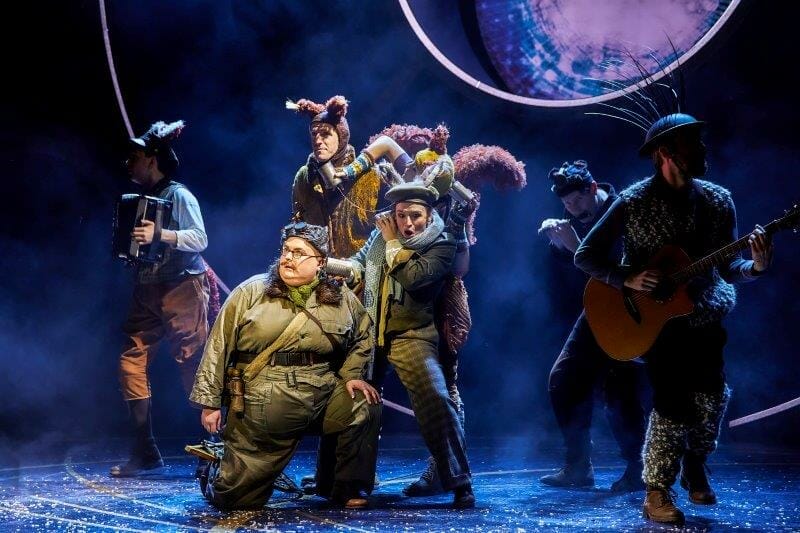 How much we actually know about the life of Shakespeare, his wife, and their children is a source of contention for many, so when Hamnet, Maggie O’Farrell’s novel telling a fictionalised history of the family was released, a stage adaptation seemed the perfect production to reopen the Swan Theatre. Now the production, directed by the RSC’s Erica Whyman transfers to London’s Garrick Theatre.
How much we actually know about the life of Shakespeare, his wife, and their children is a source of contention for many, so when Hamnet, Maggie O’Farrell’s novel telling a fictionalised history of the family was released, a stage adaptation seemed the perfect production to reopen the Swan Theatre. Now the production, directed by the RSC’s Erica Whyman transfers to London’s Garrick Theatre.
The novel is adapted for the stage by Lolita Chakrabarti, who has enjoyed recent success with The Life of Pi. Hamnet essentially has three storylines running through it. How William and Anne (Agnes in this version) met, the illness and death of their son – the titular Hamnet, and the aftermath of grief that led to the writing of Hamlet.
Unlike the novel, the stage adaptation tells the story in chronological order, which does make it much easier for an audience to follow, but also takes some of the emotional investment away. However, those scenes where the Pestilence takes hold, and we’re reminded the family has faced this before, are powerful. We feel the grief most strongly from Hamnet’s twin, Judith (Alex Jarett) and Agnes.
Despite what’s been pieced together about the life of Shakespeare, we know relatively little about the life of his wife, the book really delved into her emotional state, and while you won’t find that lacking in the stage version, there’s probably more that could have been explored.
It becomes a bit of an Elizabethan kitchen sink drama at times, the women staying home to cook and clean, while the boys and men head off to school and work. Subtly, it says a lot about class and gender, and creates a plausible representation of the era.
This is further emphasised by Tom Piper’s design, the simple wood structures taking us from a life of poverty and debt to one of grandeur, via a visit to The Globe, just one of many nice touches that will delight fans of the Bard.
Ajani Cabey as Hamnet, appears only briefly, but brings joyful, playful innocence to the role, and through Phoebe Campbell’s portrayal of isolation as older sibling Susanna, we see the strength of the bond between the twins.
Tom Varey is an energetic and impetuous William, but Shakespeare here must take a back seat as Madeleine Mantock’s Agnes captivates the audience with a strong will and a broken heart.
Whyman’s tight direction keeps the story moving at the right pace and still manages to acknowledge the structure of the novel. We can never know how close the story comes to real life, but that’s not the point of Hamnet, instead this heartfelt play shows us that from great grief can come something uniquely beautiful.

















